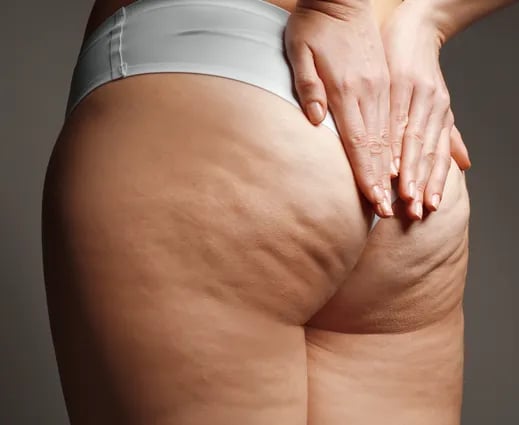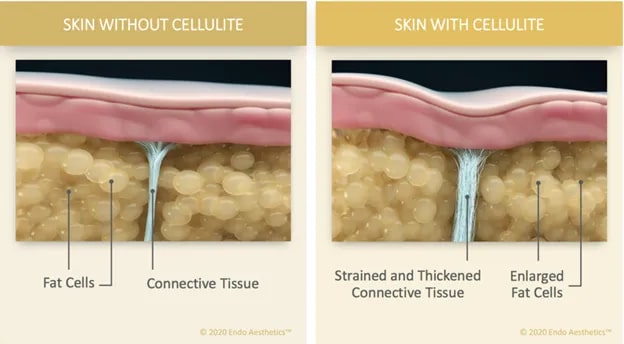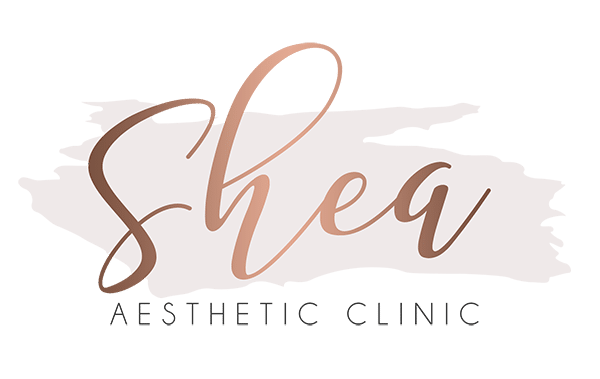Cellulite is Normal
If you are female, it is normal to have cellulite.
Cellulite is a natural part of female biology. Up to 90% of women have some degree of cellulite.
Since cellulite is present in nearly all adult females, its presence on your body is normal.
Hollywood, the media, and marketing specialists have influenced our culture to believe that cellulite is undesirable.
If you have cellulite on your bottom or your legs, please know that it is not your fault.
Lots of women that work out regularly and eat a healthy diet still have cellulite.
Cellulite isn’t fat. So, the tough workouts and healthy food choices, though fantastic for your fitness and wellness, may or may not help.
So, don’t blame yourself or feel guilty about skipping exercise occasionally or not eating enough broccoli.
You are beautiful just as you are!
Please feel free to accept cellulite as normal.
Remember, it’s what you give of yourself to others that makes you truly beautiful. It’s the relationships you form with those around you that bring true beauty and meaning to life. See our True Beauty blog.

If cellulite really bothers you, and you just want to get rid of it, the following information will help…
Understanding what cellulite is and what causes it will help you know the best way to go about treating it.
All the Facts About Cellulite
What Is Cellulite?
Cellulite is the dimpling and puckering of the skin on the buttocks, thighs, and sometimes abdomens of most adult women.
Some people describe cellulite as a “cottage cheese” appearance of the skin. It is very common.

Who Gets Cellulite?
Cellulite affects women of all shapes, sizes, ages, races, and ethnicities. It’s present in 85-90% of women.
What Causes Cellulite?
There are 3 things that contribute to the presence of cellulite:
- Over time, our skin becomes thinner
- Our fat cells enlarge and push outward against our thinning skin
- Fibrous bands attach our skin to the underlying muscles. Over time, these bands thicken and pull unevenly on the skin’s surface from within. This causes the dimpling and puckering of cellulite.

More Details About Why the Dimpling Occurs
Cellulite is caused by a combination of factors. The first is due to the connective tissue structure in women.
Bands of connective tissue in the fat layer connect our skin to the underlying muscle. These bands are called “fibrous septae.”
The fibrous septae are composed of collagen.
In women, the fibrous septae are oriented perpendicular to the skin’s surface. In men, they are more parallel.
The perpendicular orientation of the fibrous septae causes the bands to pull inward on the skin.
This keeps the skin attached to our muscles where it should be, but also causes the dimples of cellulite.
This effect worsens as the fibrous septae thicken with age.


What Body Parts are Most Affected by Cellulite?
Cellulite can occur on the buttocks, thighs, lower abdomen, and upper arms.
In a survey of over 2000 women with cellulite, they reported their cellulite to be most commonly present on their:
Thighs 81%
Butt 66%
Stomach 42%
Hips 33%
Arms 24%
Calves 11%
In general, cellulite is predominantly found on the buttocks and thighs.
Can Men Get Cellulite?
While cellulite is more common in women, men can also develop cellulite.
Though cellulite can occur in men, this is quite rare.
The treatments for cellulite in women can also be used to treat cellulite in men.
How are Fat and Cellulite Related?
Cellulite is not necessarily a sign of obesity, ill health, or inactivity.
The fat cells in the areas of cellulite are different from the fat cells elsewhere in the body. They are larger and more metabolically active.
In areas of cellulite, the skin stores fat more superficially than in skin without cellulite.
Extra weight and excess fat can make cellulite more noticeable.
If you’re overweight, the best remedy is to lose a few pounds, slowly, over several weeks.
However, keep in mind that cellulite is often present in thin women that don’t have any excess fat.
So, weight loss and exercise may or may not improve the appearance of cellulite. In fact, sometimes weight loss makes cellulite look worse due to increased skin laxity.
If weight loss and exercise do help, the improvement may be minimal.
The bottom lines are that
Skinny or plump, you can have cellulite
Losing weight rarely gets rid of cellulite altogether
How Does Age Affect the Appearance of Cellulite?
As we age our skin becomes thinner, looser, and somewhat saggy.
Fat is more easily able to protrude through thinner skin. Thinning skin is also less able to resist the inward tension created by the fibrous septae.
Thus, cellulite often appears more prominent in aging (thinning) skin.
Are There Risk Factors for Getting Cellulite?
Some of the risk factors are beyond your control.
Being female is the major risk factor for cellulite. Cellulite also tends to run in families.
Cellulite is most obvious in women that are past the years of puberty and overweight.
The hormonal changes associated with pregnancy and menopause can worsen the appearance of cellulite.
There are risk factors you can control.
Can cellulite be prevented? Possibly.
Pursuing a healthy lifestyle may or may not change the appearance of cellulite.
But, in general, those who live a healthy lifestyle have less cellulite.
What can you do that may help reduce cellulite?
Drink plenty of water.
Maintain a healthy weight.
Avoid beverages that contain sugar.
Avoid the use of tobacco and alcohol.
Make regular exercise part of your daily life.
Choose a well-rounded diet rich with colorful fruits and vegetables, whole grains, and nuts.
These choices may help prevent, control, and improve the appearance of cellulite.
Is There a Way to Measure the Severity of Cellulite?
Health care providers that specialize in treating cellulite use the Photo-Numeric Cellulite Severity Scale to determine cellulite severity.
This scale is used to monitor the progress of cellulite treatments.


What Cellulite Treatments Really Work?
So many people ask the questions, “How do I get rid of cellulite?” or, “Is there a cure for my cellulite?” or, “Is there a way to treat cellulite naturally, at home?”
There are many treatments, diets, pharmacologic agents, exercise regimens, devices, and more that claim to:
Reduce cellulite
Remove cellulite
Eliminate cellulite
Get rid of cellulite overnight
Reduce cellulite in a week…
What everyone wants is a treatment that truly works.
Unfortunately, many of the available techniques used to treat cellulite today don’t work.
Additionally, many of these treatments have undesirable side effects.
The purpose of the following content is to inform you about current cellulite treatments and whether they work…. or not.
What Exercises are Best to Get Rid of Cellulite?
Many women want to know how to get rid of the cellulite on their thighs and bum naturally.
Some recommend getting rid of cellulite by doing lots of squats in the gym.
Scientific evidence has disproved the idea that specific exercises can target fat in a particular area.
Fat loss from exercise is generalized from the entire body, not just the body part being exercised.
So, can exercise help get rid of cellulite?
Yes. Exercise can help, but it won’t cure cellulite.
Exercise can’t cure cellulite because it has no effect on fibrous septae or skin thickness.
There is no “one set” of exercises, or an exercise routine, that is best for cellulite reduction.
Additionally, the body doesn’t burn the fat in cellulite for fuel during exercise.
This is why diet and exercise often don’t do much to get rid of cellulite. When dieting and exercising, the body burns stored fat preferentially to fat trapped in the layers of the skin.
However, exercise, in general, helps improve cellulite because it helps us maintain a healthy weight and avoid obesity.
Also, having more muscle makes your skin look smoother and firmer and makes cellulite less noticeable.
Is There a Diet that Helps Decrease Cellulite?
No one diet has been shown to improve cellulite.
Excessive intake and unhealthy diets lead to obesity and poor health.
Obesity can worsen the appearance of cellulite because there is more fat pushing up against tethered and thinning skin.
Fluctuations in body weight, however, usually have minimal effect on the appearance of cellulite.
Cellulite is influenced by genetic factors, so anyone can struggle with cellulite, regardless of body weight or BMI.
Even slender women in excellent physical condition can have cellulite.
In general, choose a well-rounded diet rich with colorful fruits and vegetables, whole grains, and nuts. Drink plenty of water. Avoid beverages that contain sugar. Make regular exercise part of your daily life. Maintain a healthy weight.
These choices may help prevent, control, and improve the appearance of cellulite.
Can a “Healthy Tan” Hide the Appearance of Cellulite?
No. The appearance of cellulite is not changed by skin color.
Certainly, the way cellulite appears through clothing is not affected by tanning.
Tanning, whether from the sun’s rays, or in a tanning bed, causes skin damage and premature aging.
With time, the skin laxity of sun damaged skin will worsen the appearance of cellulite.
This effect pales in comparison to the increased risk of skin cancer in those who get tons of tanning time.
Can Sunscreen Help Prevent Cellulite?
Yes. It can help.
Sunscreen prevents some of the issues that will worsen the appearance of cellulite:
- Sun damage
- Premature skin aging
- Skin laxity
Sunscreen is highly recommended by all dermatologists and skin care specialists.
Can Topical Creams or Medications Help Treat Cellulite?
Many women want to treat cellulite at home without going to a doctor who specializes in cellulite treatment.
Thus, many skin care products have been developed that promise to improve cellulite.
When thinking about whether a skincare product can treat cellulite, consider the causes of cellulite:
Thickened fibrous bands connecting skin to muscle
Fat pushing up against the skin
Thinning of the skin with age
No topical skincare product can affect the fibrous bands in the fatty layer between our muscles and our skin.
No topical skincare product can affect the fat under our skin.
There are medical-grade skincare products that can help gradually improve collagen production for firmer skin. However, even high-quality products are rarely effective on cellulite. This is because cellulite treatment requires the remodeling of fat, connective tissue, and collagen. This is simply more than a cream can provide.
Cellulite creams are rarely a worthwhile investment.
Can a Retinol Cream Help Cellulite?
Retinols are medical grade skin care products that do help improve collagen production for firmer skin.
When you look for firming creams, look for the word “retinol.”
Retinols won’t cure cellulite — nothing does.
But this agent can improve your skin’s look and texture.
Start with a low concentration retinol product (around 0.3%) and work your way up with time.
Retinols can thicken your skin’s outer layer to help cover bumpy areas underneath. It will take at least 6 months to see effects.
It is best to have the guidance of a medical aesthetician when starting active skin care products like retinols.
Can Caffeine Containing Creams Help Reduce Cellulite?
No.
Many of our clients ask if “caffeine creams can get rid of cellulite?” Or, if using a coffee scrub can minimize cellulite?
Creams and scrubs that contain caffeine, theophylline, or aminophylline certainly claim to reduce cellulite.
However, there is no scientific evidence that these products improve or reduce the appearance of cellulite.
Are There Any Natural Remedies that Help Treat Cellulite?
No.
There are certainly many natural products available that claim to treat cellulite. However, there are no scientific studies proving that these products are effective or safe.
Natural remedies, medications, or supplements are considered “foods.” These products are not regulated by the FDA.
There is no governing organization that holds these manufacturers accountable to provide an accurate list of ingredients.
Thus, the list of ingredients in these products may or may not match the content of the container.
Some of these manufacturers use complete integrity in their process of production. These companies often use third party organizations to verify the accuracy of their list of ingredients.
Other companies are fully fraudulent.
Avoid natural remedies for cellulite removal.
What About Herbal Body Wraps for Cellulite?
Herbal body wraps are often advertised as a treatment for cellulite.
Again, avoid natural remedies for cellulite removal.
This method has not proven to be effective in the scientific literature.
Will Rollers Reduce Cellulite?
No.
The use of rollers may help reduce tissue swelling.
However, temporary reduction in tissue fluid, has no effect on cellulite.
Are Massage or Manual Manipulation Useful in Diminishing Cellulite Dimples?
Probably not…
There is one FDA approved massage treatment for cellulite: Endermologie®.
Endermologie® provides deep massage while also lifting the skin with a vacuum-like tool.
The FDA approved this as a medical device that has little potential to cause harm. However, the FDA did not state that Endermologie® is an effective cellulite treatment.
Spas that offer Endermologie® say that a number of treatment sessions are necessary to see results. Sessions last about 45 minutes.
Studies on this treatment offer mixed results. Some studies show that Endermologie® does not improve cellulite. Others show that Endermologie® does improve the appearance of cellulite. In the studies that show effectiveness, however, the beneficial effect only lasts about 1 month.
In general massage treatments are based on the concept that vigorous massage in cellulite-prone areas:
- Improves blood flow
- Removes toxins
- Reduces excess fluid
Though this treatment sounds “natural” and perhaps relaxing, it has no lasting effect on cellulite.
Massage and manual manipulation have minimal to no effect on cellulite because they don’t treat the causes of cellulite:
- Thickened fibrous bands
- Thinning skin
- Fat build-up within the skin
So, enjoy your relaxing massages, but don’t expect your cellulite to vanish with this or any type of manual manipulation.
Does Dry Brushing Treat Cellulite?
No.
Dry brushing does exfoliate your skin, removing dry and dead skin cells. It also stimulates circulation in the area. However, dry brushing has no effect on cellulite.
How about Mesotherapy, does it Work for Treating Cellulite?
The injection of chemicals to dissolve fat is possible.
During mesotherapy procedures, cellulite is treated with a series of injections.
Various substances such as: caffeine, hormones, enzymes, and herbal extracts are used in mesotherapy treatments for cellulite.
Unique sets of ingredients are used by each practitioner. Therefore, there’s no way to know which, if any, ingredients are effective.
Very few studies show that mesotherapy works for the treatment of cellulite.
Common side effects from mesotherapy: redness, swelling, tender nodules under the skin, infection, and allergic skin reactions.
Additionally, the FDA warns against using these unapproved procedures.
So, no, mesotherapy is not an effective treatment for cellulite.
Which Supplements Help Improve the Appearance of Cellulite?
Many companies produce supplements that claim that their supplements can reduce or improve cellulite.
These supplements contain ingredients like caffeine, grape seed extract, or gingko biloba.
There is no evidence that any supplement can reduce cellulite.
Does CoolSculpting Work to Get Rid of Cellulite?
No. CoolSculpting does not get rid of cellulite.
CoolSculpting does not have the ability to address the fibrous bands that cause cellulite.
While CoolSculpting can be very effective for getting rid of small pockets of unwanted fat, it currently cannot get rid of cellulite
Are Radiofrequency Treatments Effective in Removing Cellulite?
No.
Radiofrequency treatments tighten, thicken, and rejuvenate loose, saggy skin.
Skin laxity often contributes to the appearance of cellulite.
In this situation, as radiofrequency treatments improve skin tone and tightness, the cellulite may appear less prominent.
However, radiofrequency treatments don’t affect the fibrous bands that cause the dimples of cellulite.
So, no, radiofrequency treatments by themselves are not effective at treating cellulite.
However, radiofrequency is helpful when skin laxity is a significant portion of the problem.
Is Liposuction a Good Treatment for Cellulite?
No.
While liposuction can remove unwanted fat quite effectively, it is not recommended for the treatment of cellulite.
Liposuction is not recommended to treat cellulite because this procedure removes subcutaneous fat.
The fat cells that cause cellulite reside more within the skin than the subcutaneous layer.
The fat removed during liposuction can lead to unevenness and skin laxity. Both of these problems will worsen the appearance of cellulite.
If I Can’t Get Rid of Cellulite, How Can I Camouflage the Craters?
Compression can help hide cellulite, but it can’t cure or prevent it.
See how your cellulite looks in Spanx, or yoga pants. Try some support hose or tights.
Modern support hose don’t look like the thick, saggy things your grandma used to wear.
What Really Works for Cellulite Treatment?
Non-Invasive Treatment Options for Cellulite
Qwo® is a cutting-edge treatment for cellulite that doesn’t require any cutting.
Qwo® is an injectable medication used to treat moderate to severe cellulite.
Qwo® is FDA approved.
Qwo® effectively targets the underlying cause of skin dimpling and improves the appearance of cellulite.
How does Qwo® work to treat cellulite?
Qwo works directly on the structural problem that causes cellulite: fibrous bands (septae). These bands tether the skin down and cause the “dimples” of cellulite.
The fibrous septae are composed primarily of collagen. Qwo contains collagenase, which is an enzyme that dissolves collagen.
So, the injection of Qwo into the dimpled areas of cellulite enzymatically dissolves and releases the fibrous bands.
The release of the fibrous band (septae) eliminates the skin tethering and the dimpling of cellulite.
The following videos explain how Qwo® works to treat cellulite:
A Qwo® treatment series for cellulite consists of three sets of injections. Each injection session is spaced 3 weeks apart.
Wondering how long it takes to get rid of cellulite with Qwo®? It takes about 2-3 months to receive the maximal benefit of Qwo® injections for cellulite.
Some patients undergoing treatment with Qwo® see results as early as 3 weeks after treatment.
These are pictures of a patient treated with Qwo for cellulite on the buttocks at Shea Aesthetic Clinic in Oak Ridge. These pictures were taken 3 weeks after the first set of injections:

Thus far, scientific studies show that the results of Qwo® last up to 2 years or more.
To learn more about Qwo®, check out our Qwo for Cellulite page.
Invasive Treatment Options for Cellulite
Are Lasers Effective at Treating Cellulite?
Cellulaze® is a laser treatment that is FDA cleared for cellulite reduction.
Cellulaze® uses a tiny laser probe, which is inserted beneath the skin through a small incision at each dimple. However, it is considered minimally invasive and can be safely performed by a qualified provider in-office, using local anesthesia.
The laser heats the tissues beneath the skin. This works too:
Release some of the fibrous septae
Reduce the thickness of the subcutaneous fat layer
Stimulate collagen production which thickens your skin
Improve skin texture and elasticity
These effects of the laser treatment work together to help reduce the appearance of cellulite.
Downtime is about 2 days. Patients have bruising and swelling after the procedure that clears up within about 1-2 weeks after the treatment.
The results of Cellulaze® laser treatment for cellulite are reported to last about six months to one year.

What Surgical Options are Available for Treatment of Cellulite?
Subcision is a surgical technique that severs the fibrous bands that cause cellulite.
Cellfina™ is a surgical procedure that targets the bands that cause dimpling and depressions in the buttocks and thighs.
Cellfina™ is most effective at treating deep dimples in patients with severe cellulite.
Local anesthetic is required for this procedure.
To perform the Cellfina™ procedure, a vacuum hand piece is placed over the dimpled skin. This pulls up on the fibrous band(s) beneath the dimple.
Next, a small, needle-like microblade is inserted into the skin. The surgeon then cuts the fibrous band(s) causing that dimple.
This releases the inward tension on the skin, and thus is an effective treatment for cellulite.
The results of Cellfina™ are noticeable within a few days after treatment.
Side effects include soreness and bruising. Serious side effects are rare when the treatment is performed by a qualified physician.
In a study of 232 patients, 99% were satisfied with their results. The results have been reported to last up to 2-3 years
For those who are comfortable with surgery, Cellfina™ can be counted on to noticeably diminish the dimples of cellulite.
** Treatments that require a laser, incision, or both (such as Cellulaze or Cellfina) require advanced medical training and knowledge of anatomy and should be performed only by a qualified cosmetic surgeon or provider with equivalent training and experience.
How does QWO Compare to Invasive Cellulite Treatments?
Invasive cellulite treatments work by severing fibrous septae.
Cellfina™ uses a tiny blade to sever the bands.
Cellulaze® does so with thermal laser energy.
Qwo® also severs fibrous septae, but it does so chemically, without the need for an incision at each dimple.
Instead, Qwo® is delivered with the same sized needle that is typically used to administer Botox.
Schedule a consultation to discuss your needs and goals, review your treatment options, and learn whether cellulite reduction treatment is right for you.

Dr. Kirk Bass and the skin care specialists at Shea Aesthetic Clinic specialize in the treatment of cellulite.
Shea Aesthetic Clinic was one of the first practices in the greater Knoxville area to offer Qwo® for cellulite.
They provide several supplemental treatments, along with Qwo®, that significantly reduce the appearance of cellulite. These include skin tightening, fat burning, and muscle-building treatments.
Let Dr. Bass and his team of experienced skin care experts and medical professionals help you with your cellulite concerns.
Schedule a consultation to discuss your needs and goals, review your treatment options, and learn whether cellulite reduction treatment is right for you.
Schedule a consultation to discuss your needs and goals, review your treatment options, and learn whether cellulite reduction treatment is right for you.

